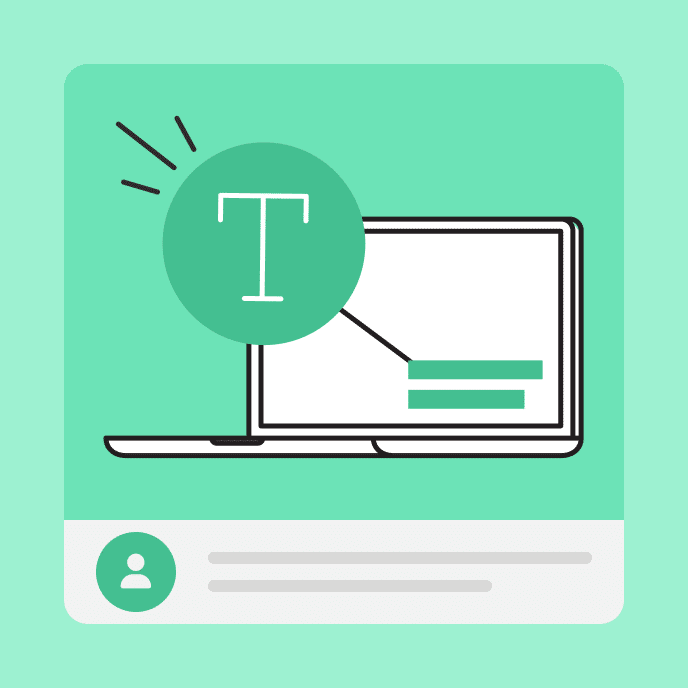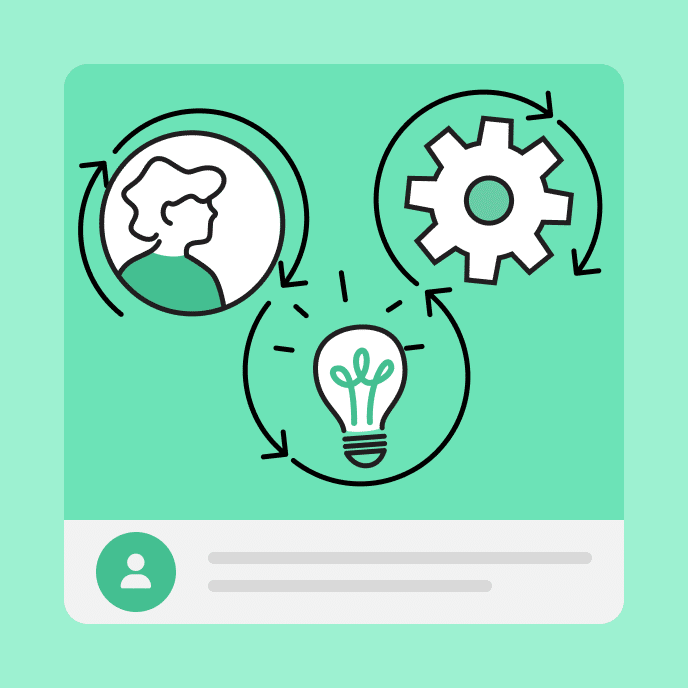6 Tips to Design Personalized Learning Experiences Online
Apply these course design tips to tailor online training to the learning styles and needs of individual employees—and boost program efficacy and engagement.

What is personalized learning—and how does it advance workplace training goals?
Personalized learning is an instructional approach that aims to deliver a customized learning experience. It involves tailoring program content and design to learner interests, styles, and individual needs—resulting in more relevant, engaging, and effective training.
Why is a personalized training strategy impactful? Employees feel more invested in learning that advances their interests or career goals, leading to greater engagement and completion rates. It’s also easier for employees to learn and remember information that’s designed for their specific work needs, abilities, and context—which is why personalized learning boosts training retention and performance.
Best of all? Today’s adaptive online learning solutions make it faster and easier than ever to personalize business training experiences at scale. So, ditch the one-size-fits-all model of course design, and build personalized learning for better workplace training results. The tips below will show you how.
Key Takeaways
- Personalized learning is customized to learner skills, preferences, and needs.
- Studies show that personalization improves training relevance, engagement, and knowledge retention.
- Online courses and course authoring tools can help you create personalized training at scale through smart accessibility and customization features.
How do online training programs impact personalization?
Online course development and distribution solutions allow businesses to implement personalized learning experiences at scale. Organizations can adjust learning paths, feedback, and pacing based on each individual’s progress—without the need for in-person instruction. This makes personalized learning more accessible than ever, allowing organizations to move away from a one-size-fits-all approach. Instead, they can create impactful training programs that foster growth and success across diverse teams.
6 ways to build a personalized learning experience online
1.Tailor learning objectives to student motivations
A 2024 LinkedIn survey indicates that employees feel more engaged by personalized training that aligns with their aspirations and career goals. So, be sure to answer the question, “What’s in it for me?” Start with a course introduction that states what employees will learn and why those skills are important. This tip can increase motivation and participation rates by helping employees understand how the curriculum applies to their day-to-day tasks and professional development.
2. Let learners navigate online courses at their own pace
Everybody learns at their own pace. Yet, many traditional classroom education models force students to follow along with the instructor’s pace. Self-paced e-learning courses solve this problem, giving employees greater control over their learning experience. Better yet, try unlocking online course navigation, allowing students to access content in a flexible order.
Example: Check out a creative example of unlocked course navigation below, built using the 360° image feature in the Articulate platform’s Storyline tool. Notice how it lets students learn through exploration and discovery, allowing them to click around and gather information in their preferred order.
You can explore this project here.
3. Invest in adaptive digital technologies
Adaptive e-learning tools can help you enhance course accessibility, personalizing learning to individual needs. Below are a few highlights of the many potential ways you can use e-learning technology to improve individualization and accessibility:
- Allow employees to choose their own learning style. Give students multiple ways to consume content they way they prefer such as written text, visual graphics, videos, audio, or tactile games, simulations, and role-playing scenarios.
- Leverage accessibility features. Many online authoring tools, such as Articulate, include built-in accessibility features. Leverage these features to add alt text to images, add closed captions to videos and audio files, edit focus order for screen readers, adjust text size and color contrast, and more. Not sure what these things mean or why they matter? Get free resources about creating accessible e-learning here.
4. Provide feedback and adapt learning paths in real time
Create online knowledge checks that provide real-time feedback and adjust the learning path according to the learner’s skills or assessment responses. For example, you might build a course that automatically takes learners who fail a quiz to follow-up education modules—while allowing students who get 100% on the quiz get to skip ahead. This level of training personalization makes the learning process more dynamic and responsive, addressing individual weaknesses or strengths as they arise.
Not sure how to do that? In Rise, online quizzes, fill-in-the-blank questions, branching scenarios, and sorting activities are all examples of opportunities for learners to check their knowledge and receive feedback. This Storyline tutorial shows you how to build a responsive learning path.
5. Focus on relevant examples and imagery
Another key characteristic of personalized learning is learner relevance. You can make training more relevant by using examples, scenarios, and imagery that directly relate to the learner’s work context. This will help make the material feel more practical and applicable, leading to higher levels of engagement and knowledge retention.
Bonus tip: You can use Articulate’s tool, AI Assistant, to generate context-relevant course images in seconds. The image below shows an example of a retail-themed course image generated by AI Assistant.
6. Personalize learning resources with branding and learner variables
Incorporating your organization’s branding elements and using technology like Storyline’s variables feature can also help create a more personalized learning experience. For example, have learners input their names or role and program the course to rememberthat information throughout. This simple tip can make the training feel more custom and engaging. The image below demonstrates how this looks in Storyline.
Create personalized learning for better training outcomes
Personalized learning puts learners at the center of instructional design decisions, enabling organizations to create more dynamic workplace training that meets the unique needs of each employee. This approach not only helps to engage students, but it also enhances their ability to remember and apply what they’ve learned.
With the help of online tools and customizable features, personalization has never been easier or more scalable. Get started with the tips we’ve just highlighted—or get inspired by our community members’ real examples in the free resource: 25 Ways Course Designers Personalize Learning Experiences.
You may also like

What Is Adaptive Learning?
Discover how adaptive learning transforms training into a personalized, data-driven experience that raises engagement and real-world impact.
